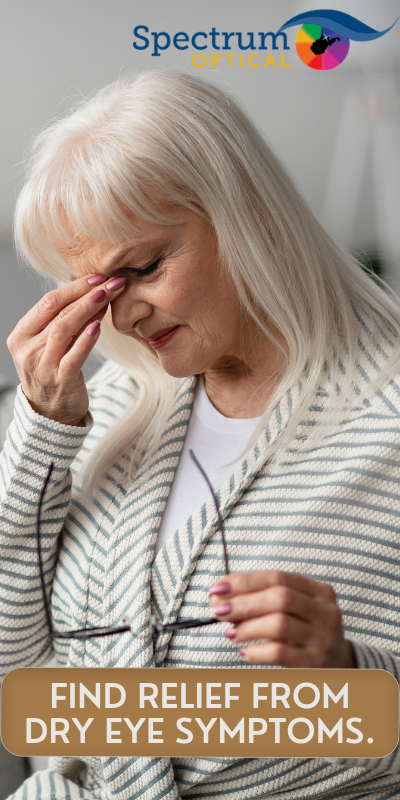Excessive Watering Could be a Sign of Dry Eyes
You might be surprised to learn that one common sign of dry eye is overly watery eyes.
While this may sound counterintuitive, a poor balance of oils in the outer layer of the tear film can lead to your eyes producing more tears. Often tear quality, rather than quantity, is the cause of dry eye syptoms.
What Is Dry Eye Disease?
Dry eye disease is a common eye condition that occurs when there is an issue with any one of the three components of your tears.
Your tears are made up of 3 distinct layers, all of which work together to keep your eyes healthy:
● The oily layer prevents your tears from evaporating too quickly
● The watery layer delivers nutrients to your eyes
● The mucus layer keeps your tear film stuck to the surface of your eyes
What are the 2 Types of Dry Eye Disease?
There are two types of dry eye disease.
Evaporative Dry Eye (EDE)
EDE is the most common type of dry eye disease. This type of dry eye occurs when you lack the proper amount of oil in your tears. When this happens, your tears can evaporate too quickly, drying out your eyes.
In some cases, EDE can be caused by meibomian gland dysfunction, a disorder where the meibomian glands in your eyes become blocked, limiting the amount of oil being produced for your tears.
Aqueous Tear Deficiency (ATD)
If you suffer from ATD, your eyes lack the aqueous layer in your tears. This means that your eyes aren’t producing enough tears to keep the eye moist, which can lead to irritating and uncomfortable symptoms.
What are the Symptoms of Dry Eye Disease?
If you are suffering from dry eye disease, you may notice any of the following symptoms:
● A burning or scratchy sensation in your eyes
● Stringy mucus in or around your eyes
● Irritated or overly-watery eyes
● Sensitivity to light or photophobia
● Eye redness, blurred vision, or eye fatigue
● A sensation of having something in your eyes
● Difficulty wearing contact lenses
If you are experiencing any of these symptoms, book an appointment with your eye doctor to
receive a dry eye disease diagnosis and get the treatment you need.
Find Relief Today
You don’t have to live with the uncomfortable symptoms of dry eye disease.
When it’s time to find relief, we can offer personalized, effective treatment. Schedule an appointment to find relief from dry eyes, at last!
